You can’t have Chinatown without Chinese food. In Vancouver’s historic neighbourhood, there’s the tourist, looking for a bite of culture. There are politicians like Justin Trudeau, looking for a place to campaign. There’s the immigrant senior, looking for familiar food. There’s the resident from the Downtown Eastside, looking for something hot, affordable and a place to sit. But in a pandemic, how are Chinatown’s eateries faring? After bringing you inside the doors of Gain Wah and Floata, we conclude our series with a visit to Kam Wai.
The seven chefs of Kam Wai in Vancouver’s Chinatown stayed home on March 27. None of them had symptoms of COVID-19, but they’re involved in a special line of work feeding the masses: wrapping dim sum by hand.
After two weeks, when everyone proved to be in good health, they put on their masks, donned gloves and hairnets and went back to making hargow and siumai.
Kam Wai is located at 249 East Pender St., a 20-foot storefront between a poultry shop and a popular place to buy rice cookers. It’s a small space with a big output as a dim sum wholesaler, supplying to restaurants and supermarkets, but also walk-in customers.
When Kam Wai reopened for business on April 8, the orders were piling up. While some people were clearing supermarket shelves of flour and canned goods, others wanted to fill their freezers with dim sum.
“It’s been a long time since it was this crazy,” said William Liu, 32, who’s run the family business for six years with the help of his sister and mother. Sometimes his niece pops in, along with his dad, who started the business with a partner in 1991.
As a younger man, Liu had a very different career path in mind: opera, not dim sum. At the University of British Columbia, he earned a bachelor of music and planned to pursue a master’s in New York.
But then his father experienced kidney failure and needed a transplant.
“He thought that he might as well retire and sell the business,” said Liu. “But I saw that since he worked here for so long, I decided to stay and help continue the family business, even though I had never run a business before.”
Metro Vancouver has no lack of high-quality dim sum restaurants, from New Westminster to Richmond with its majority-Chinese population. The most dedicated customers usually show up right when the doors open for the early bird discounts.
But the pandemic has hit restaurants hard, increasing demand for freshly made frozen dim sum to be eaten at home.
“A lot of people didn’t know you could buy frozen dim sum or how to steam them at home,” said Liu. “They come in thinking it’s really hard, but when they learn, they see it’s actually really easy. We had a lot of people, especially Canadian-borns, coming in for the first time and becoming regulars.”
Kam Wai’s storefront, lit with fluorescent ceiling tiles, is a bit like a cafeteria. You grab what you want from its many fridges — a pack of frozen dumplings, maybe a can of Coke, too — and someone from the Liu family in a red Kam Wai apron rings you through at the cashier.
If you want an instant bite and can’t wait until you get home, cooked items are available in a warmer near the cash tills, the silver trays resembling the drawers of a jewelry box when full of handmade dim sum. The place smells of lotus leaves, black beans and freshly steamed pork.
The prices are a precious find in the low-income neighbourhoods of Chinatown and the Downtown Eastside, with buns as cheap as $1.25 and four dumplings for $2.50. Hungry customers emptied the case during COVID-19.
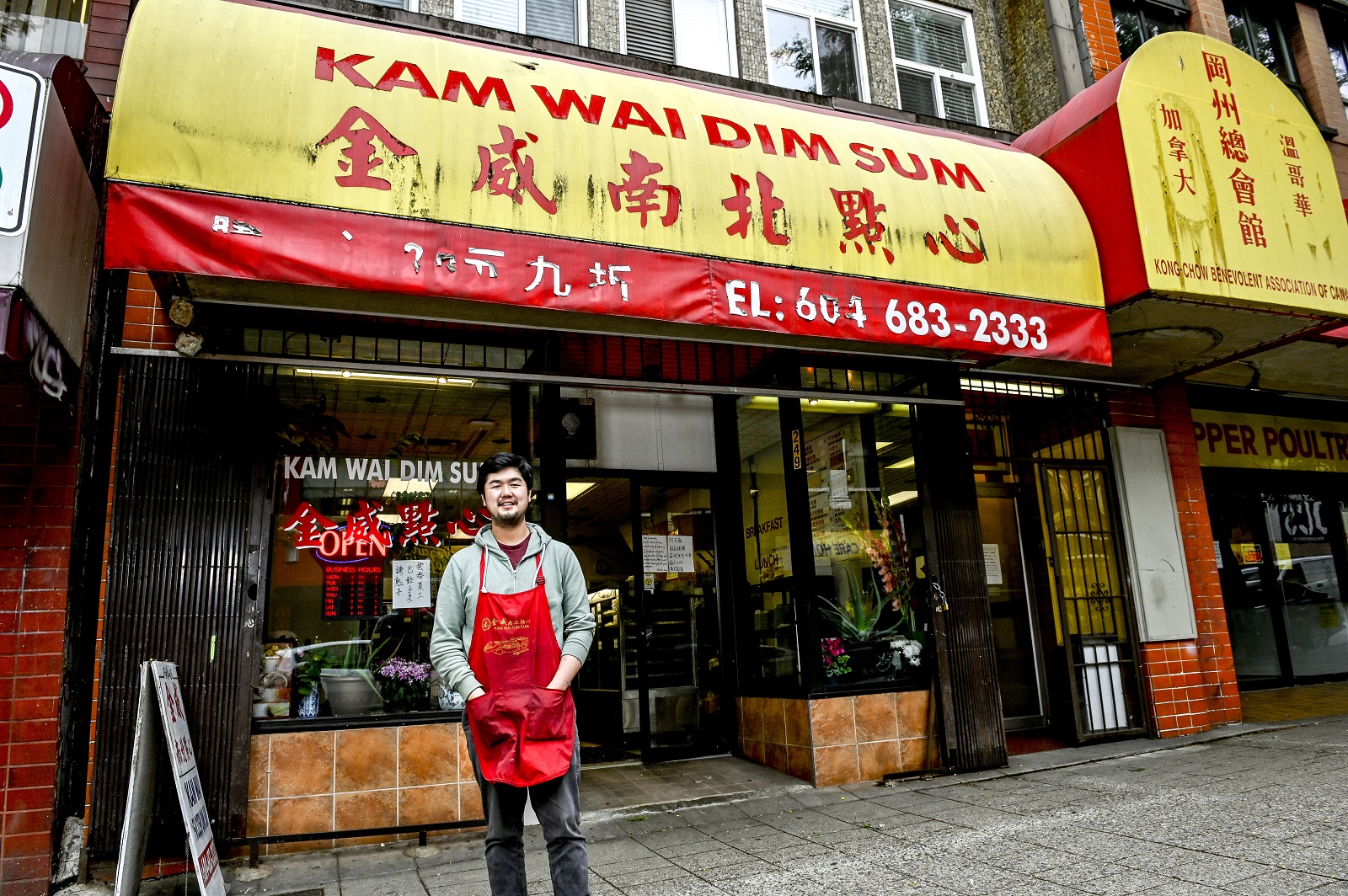
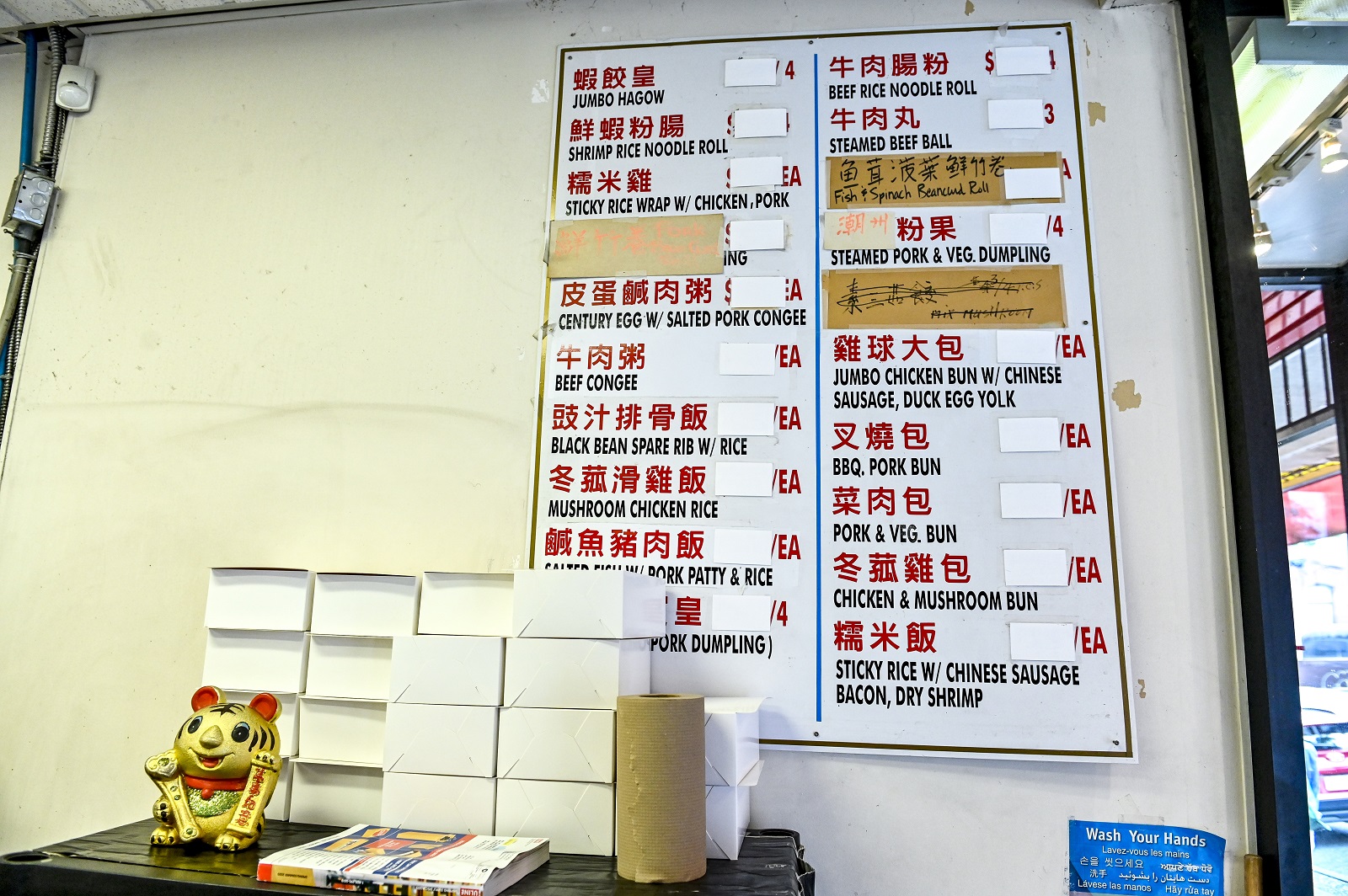
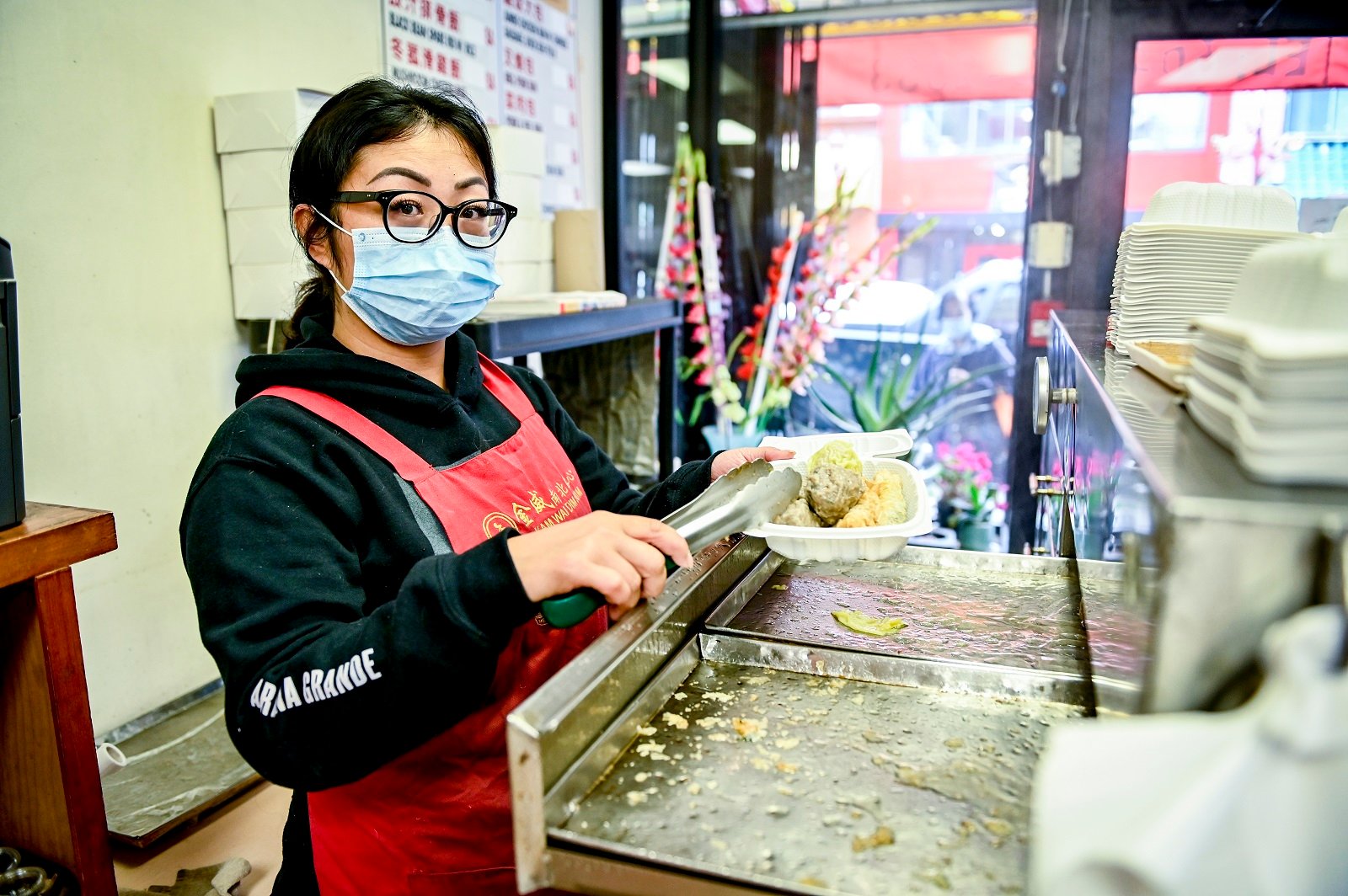
At the back of the shop is a long kitchen where the chefs hand wrap the dim sum. One of the hardest items to make is one that actually looks the simplest: the classic hargow.
“It took me a year and a half to learn!” said Liu. “It’s not at all like just wrapping any dumpling.”
The shrimp filling is folded into a skin of wheat and starch, with the edge pushed, pleated and sealed with expert finger work into the shape of a bonnet. It must be thin enough to see the pink of the shrimp within when steamed, but strong enough to hold its shape when lifted with chopsticks.
“It’s a challenging shape to master,” said Liu.
In Kam Wai’s kitchen, the chefs fold them quickly with ease.
If Liu’s not helping customers or doing paperwork, he wraps dim sum too, making hundreds of pieces a day. During the early weeks of the pandemic, the chefs’ hands strove to catch up with demand.
Across the street is the May Wah Hotel, home to many immigrant seniors. The charity that owns it ordered meals from Kam Wai for their residents during the pandemic, who were pleased to have comforting, steamed Cantonese dishes like spareribs and pork with salted fish.
The rush at Kam Wai began to subside as restrictions relaxed and restaurants reopen, but the kitchen didn’t get a break. There was the Dragonboat Festival in June, and though the False Creek races were cancelled, people still craved the sticky rice dish that accompanies the Chinese festival.
Called joong in Cantonese and zongzi in Mandarin, each serving is about the size of a fist. The sticky rice, usually accompanied with pork, egg yolk or mung bean, is wrapped with bamboo leaves and tied with twine for flavour and handy storage.
Satisfying and easy to freeze, they seemed a natural choice for a time with people holing up at home.
“Even before people were buying joong, they were coming to us for sticky rice dishes because they’re filling,” said Liu.
The final count of joong made this year at Kam Wai — about 200,000. A large number went to Asian supermarket giant T&T, which has a contract with Kam Wai to make joong for their stores.
“We usually have three extra ladies helping out,” said Liu. “They’re 60-something, 70-something and 80-something. The one who’s 80-something said that this is going to be her last year helping out. She says she can’t wrap anymore. It’s hard to find people with the skill here, because they aren’t many new people learning it. It’ll likely fade away.”
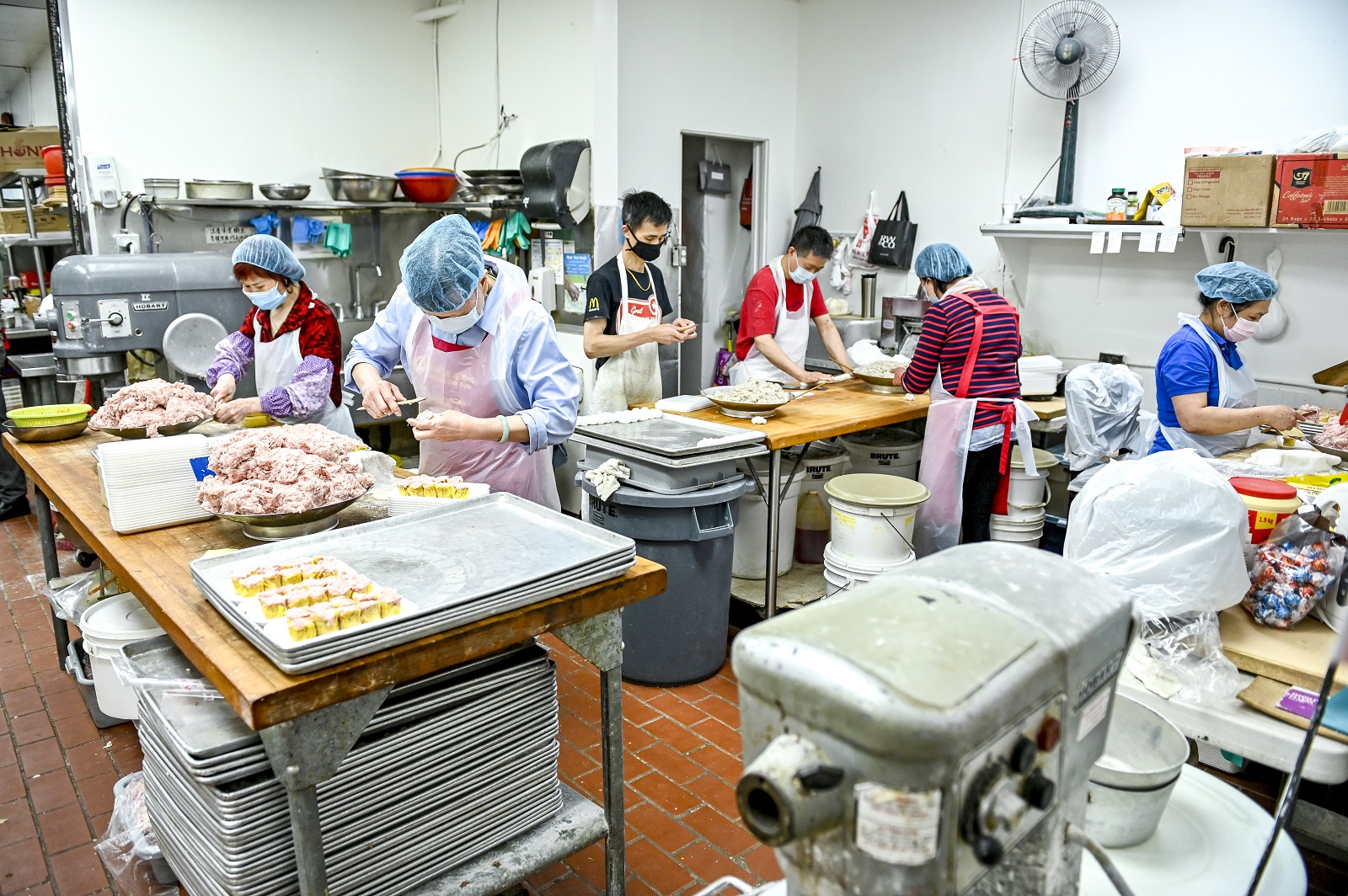
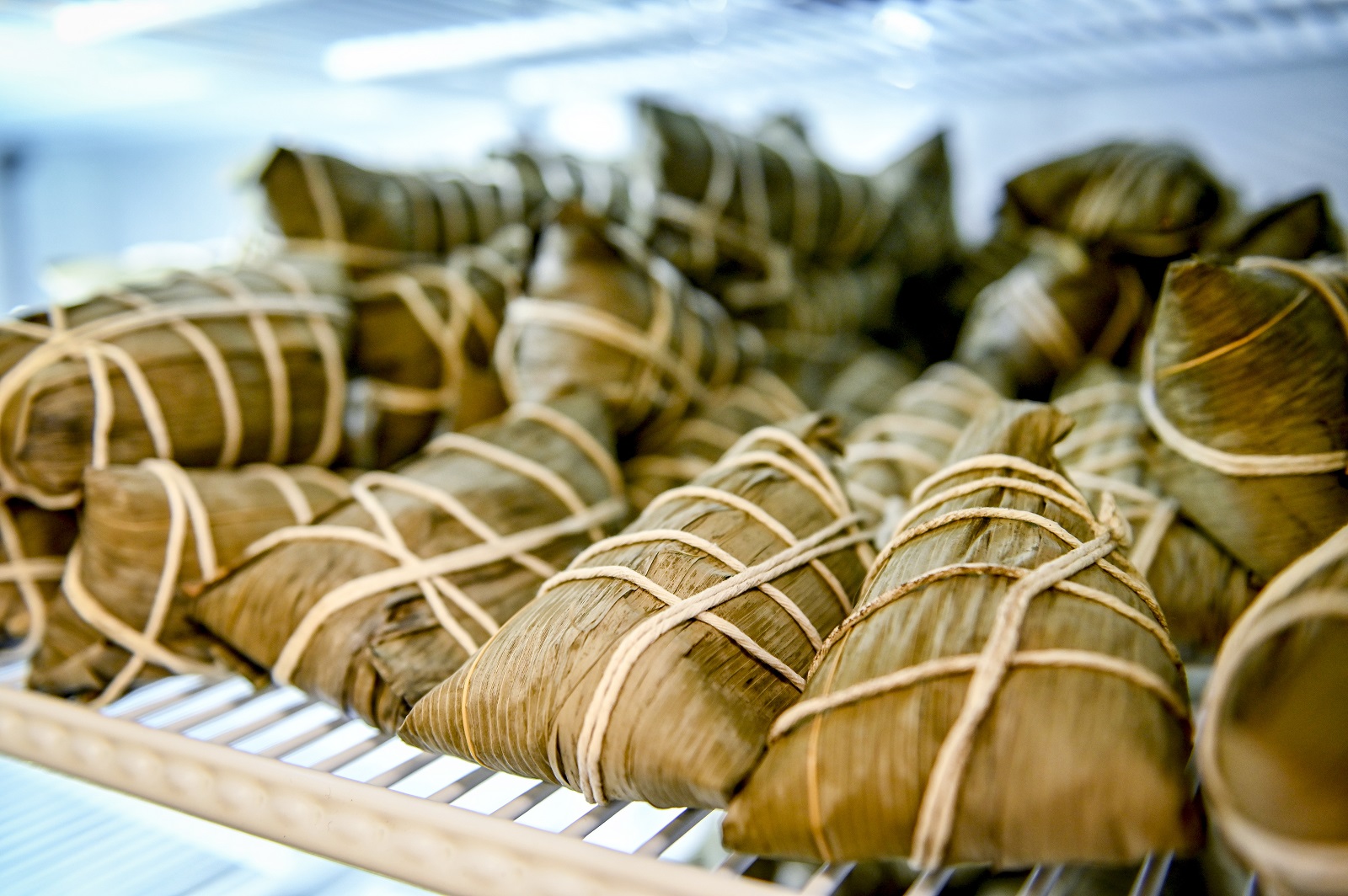
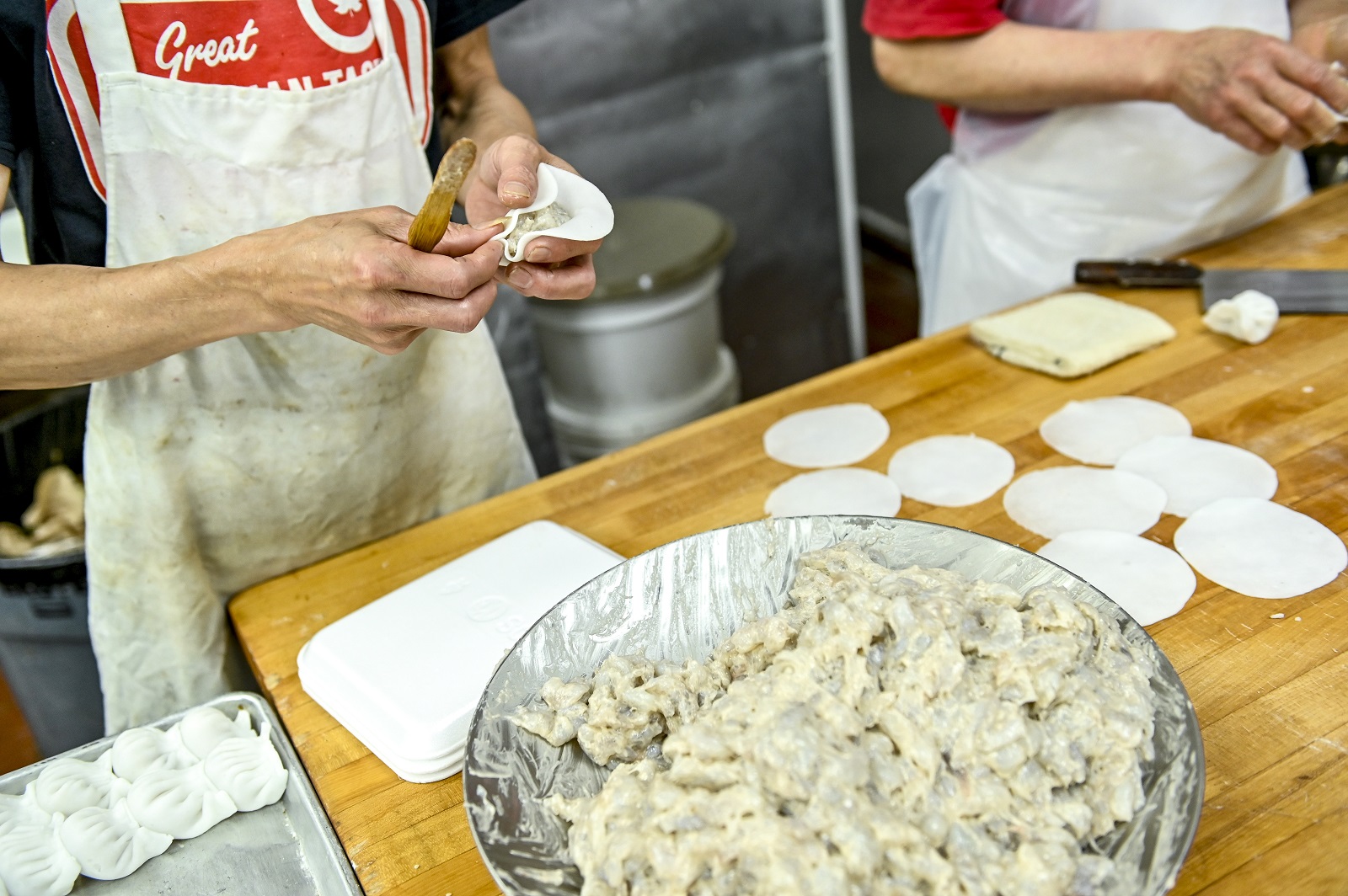
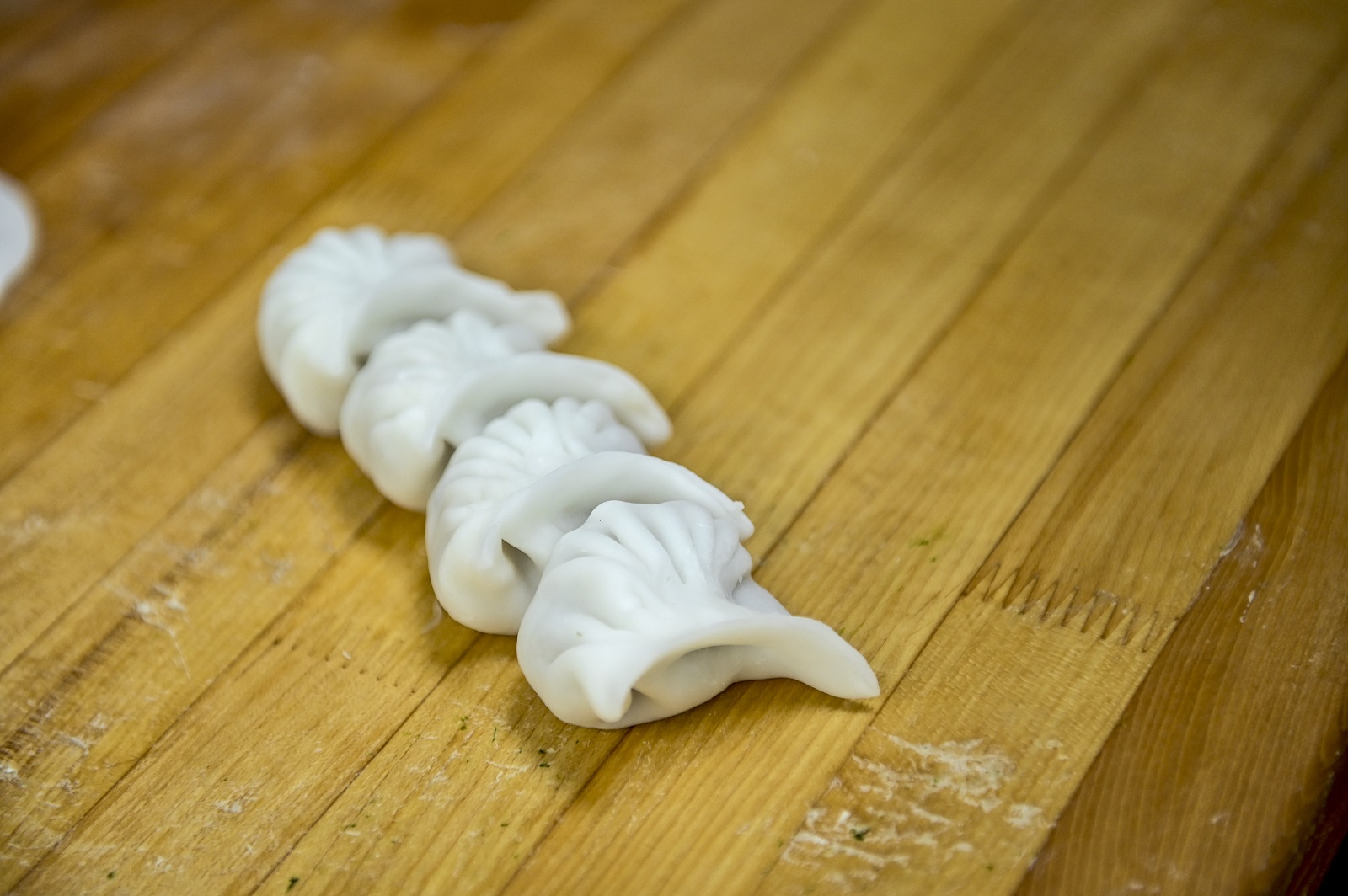
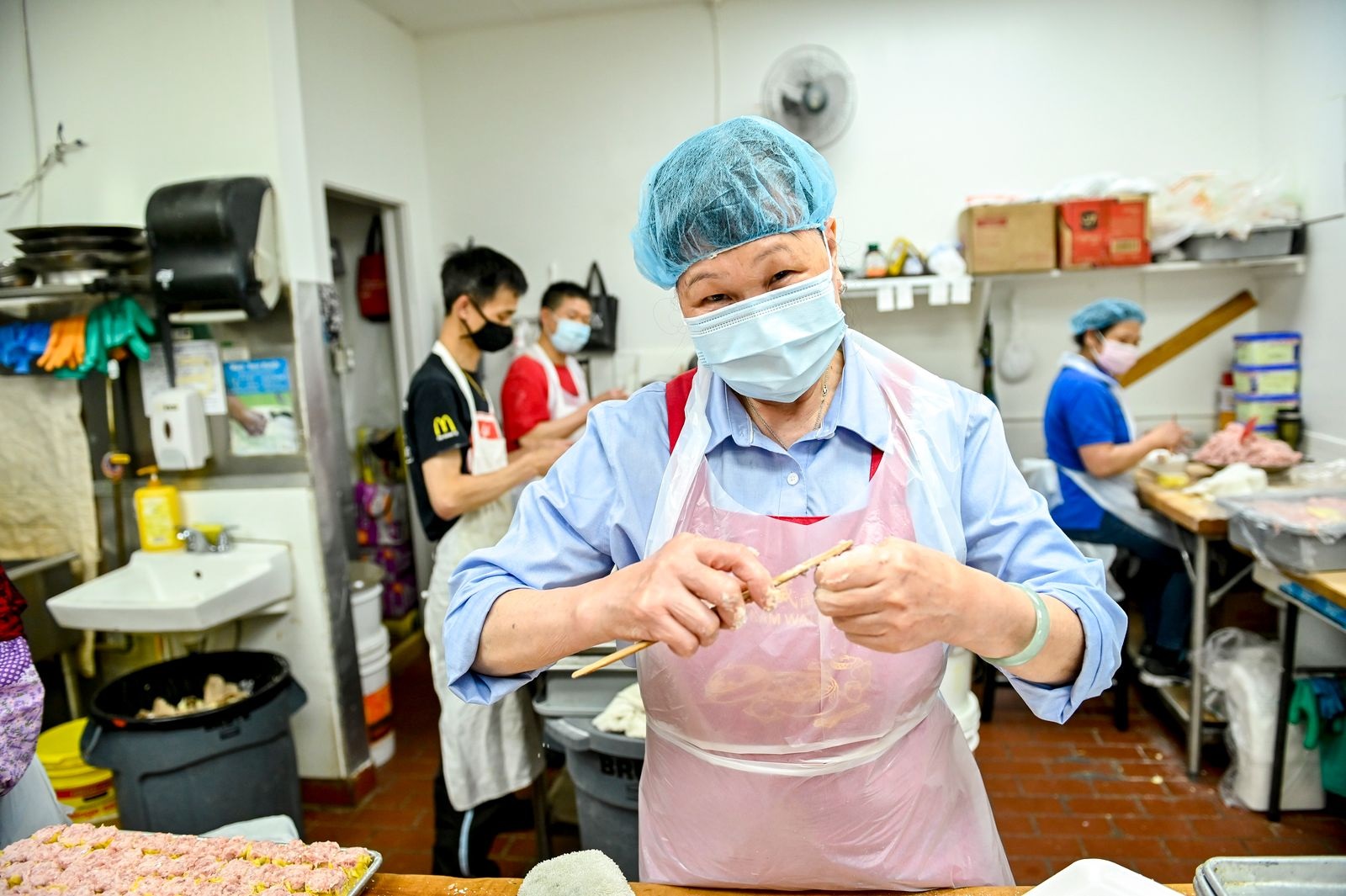
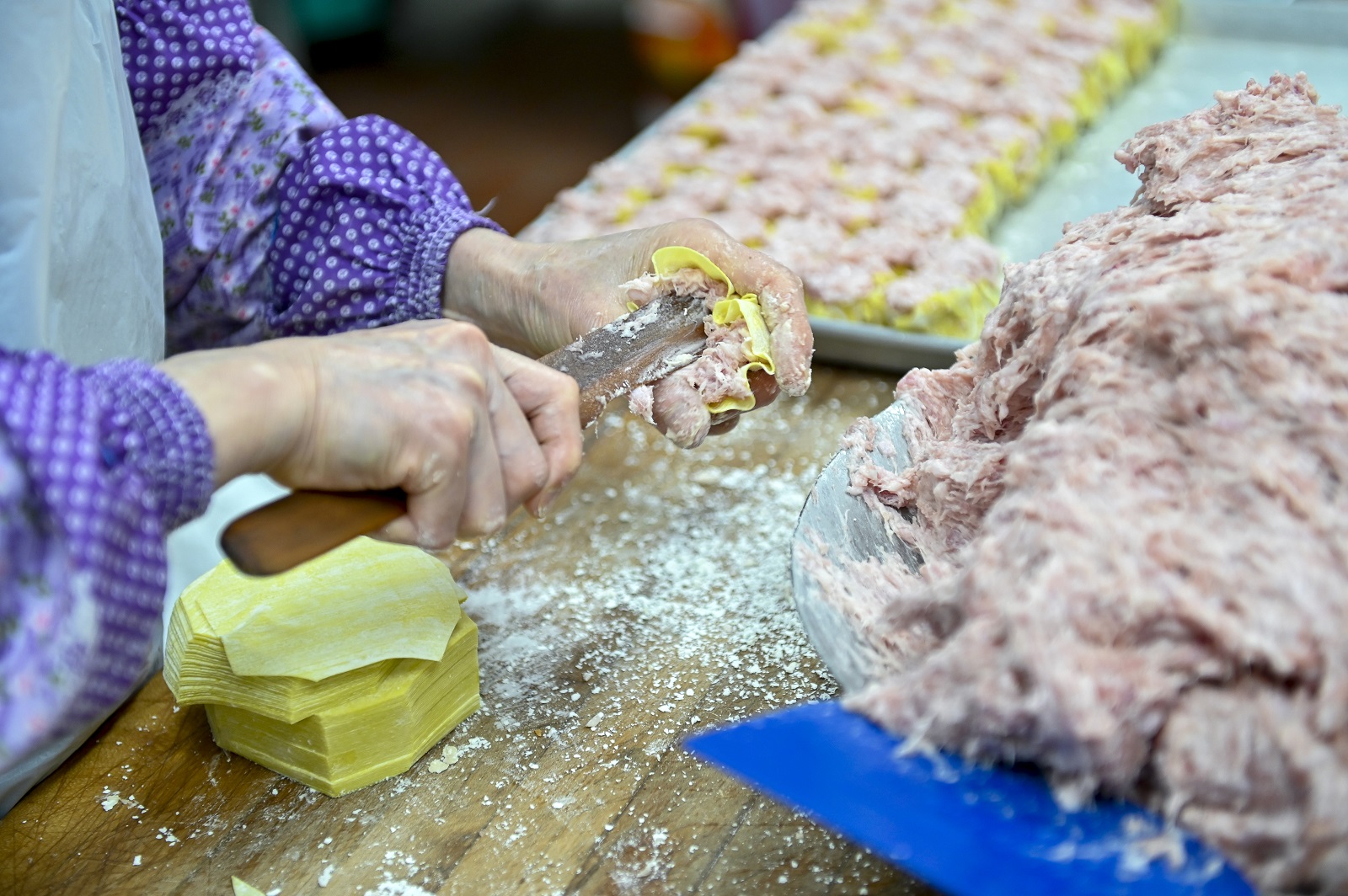
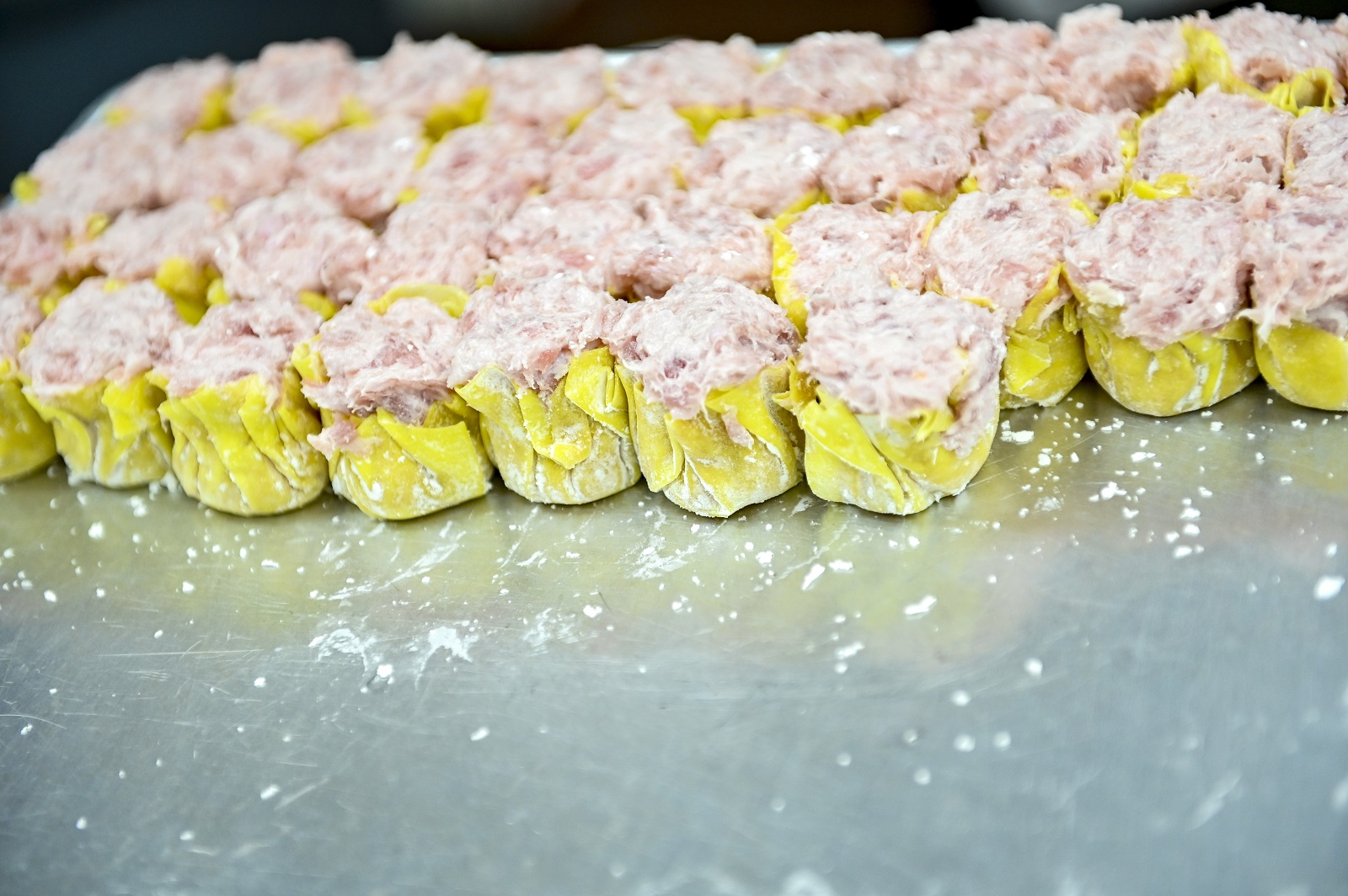
Chinatown was Liu’s world growing up in the 1990s, right before the bustle began to subside. The original Kam Wai was at 525 Gore St., and his family lived two blocks away. He attended Chinese school nearby, and after classes he enjoyed teatimes with his mother at cafes like Maxim’s and Goldstone.
“Our kitchen was in the basement,” he said of the Gore location. “At night, chefs from the big dim sum restaurants would come over part time to make dim sum again for us. They usually got off their day shifts at 3 p.m., then came over at 4 p.m. to work until about 10 p.m. It was very busy back then, with about 20 chefs making dim sum at once.”
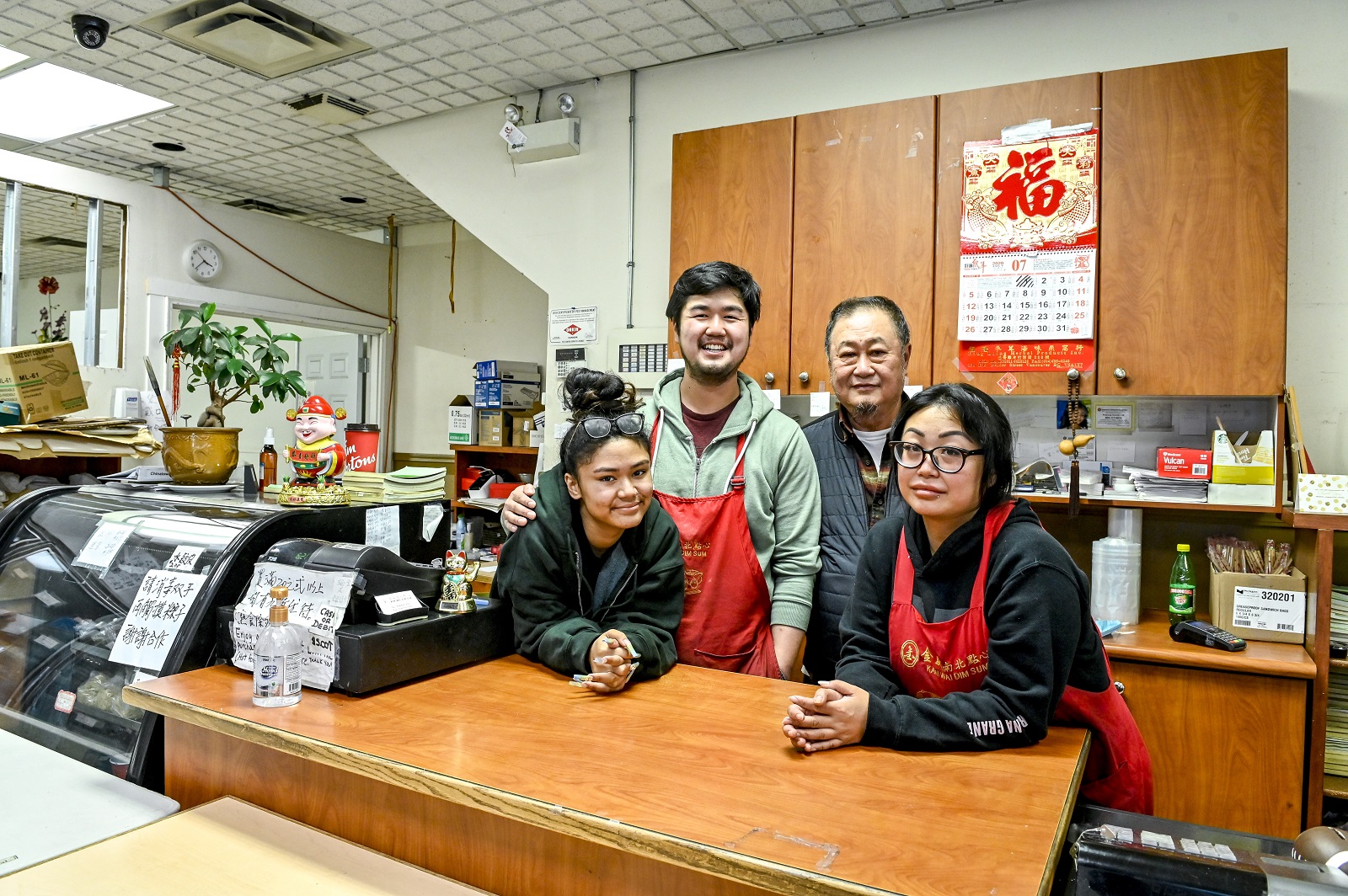
And now, Liu’s one of them, and he’s keeping the business strong in family hands.
He does miss singing sometimes, though he says, “there’s always opportunities if I can find the time.”
For now, he’s keeping a different kind of art alive for an audience of eaters, and the food sings.
Find the other stories in our series on how Chinatown is cooking through COVID here. ![]()
Read more: Food, Coronavirus





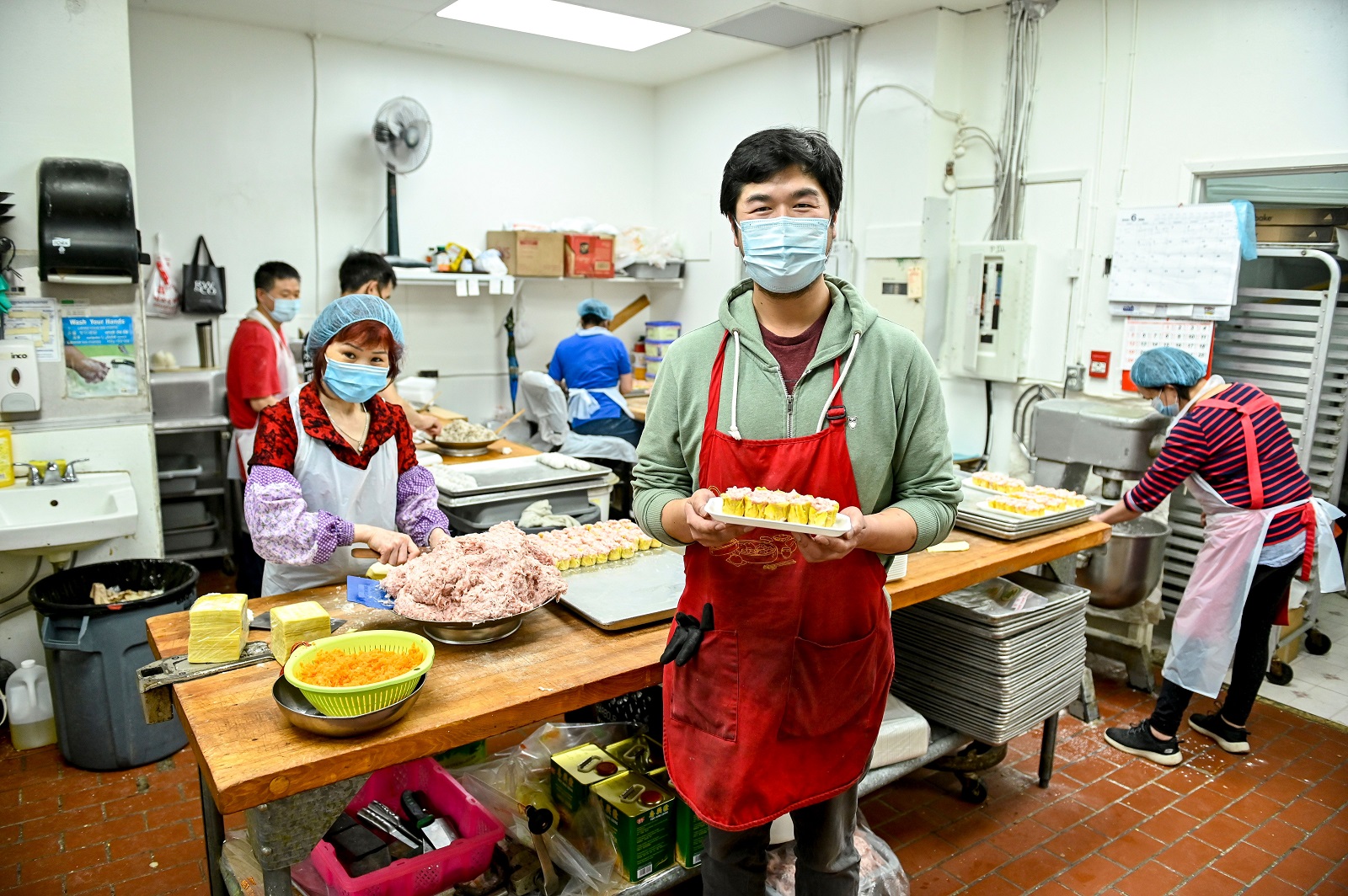












Tyee Commenting Guidelines
Comments that violate guidelines risk being deleted, and violations may result in a temporary or permanent user ban. Maintain the spirit of good conversation to stay in the discussion.
*Please note The Tyee is not a forum for spreading misinformation about COVID-19, denying its existence or minimizing its risk to public health.
Do:
Do not: